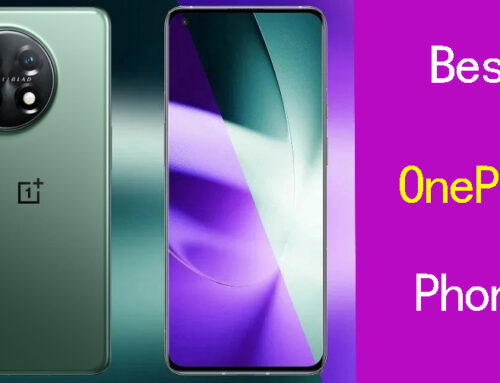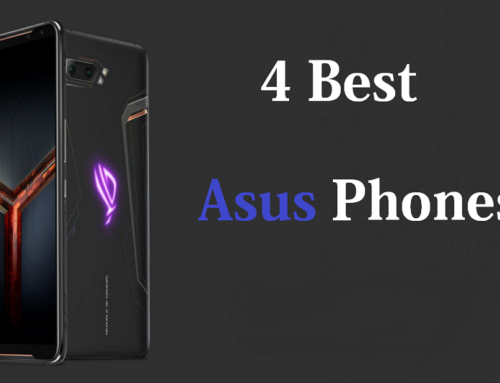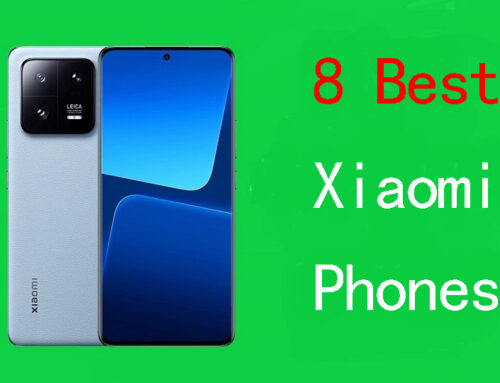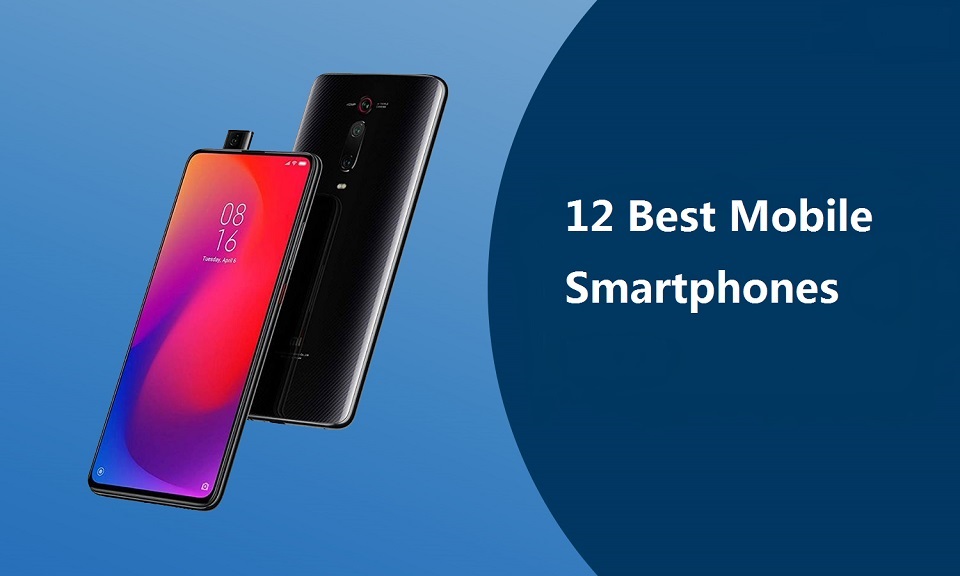
The phone is a very important thing in our day to day life. They will be used for making calls, communicating, watching videos, playing games, etc. These devices are popular all over the globe.
These days cell phones fill each role which is expected to make human existence more agreeable. It is difficult to envision a day without cell phones and we use them all over, any place we go.
Mobile phone market is a daily changing game. You can’t really predict whose leading. Today it maybe one while the next day it Maybe someone else.
Choosing a smartphone can often be intimidating since they are a heavy investment, and there are simply too many options to choose from.
Manufacturers produce a wide range of devices to suit most needs and budgets. Samsung, Apple, Google, OnePlus, Asus, etc have gained popularity with their exclusive phones.
Mobile world is growing at rapid speed as new mobile and new technology as add up every then and now. Now, the customers have a hope to access smarter phones in 2024 considering the faster developments in technology.
What is the best smartphone to buy in 2024? The “best” mobile phone certainly encompasses a spectrum of features and attributes. A pretty good camera, lots of storage for photos and videos, a fully stocked app store and a good screen.
Buying a new phone is depend on the customer’s preference, budget, and needs. For your ease, we have listed down some of the best Smartphones that could surely meet your requirements.
The 20 best smartphones you can buy in 2024
I recommend the best models available for every budget and need, whether you fancy an ultra-premium folding device or an affordable photography phone to upgrade your Instagram page.
From the latest top-spec iPhone and Galaxy handsets to exciting new contenders from the likes of Xiaomi and Oppo, there are plenty of phones all with cutting-edge features like fast wireless charging, 5G data connections and exceptional cameras perfect for low-light snaps.
1. iPhone 15 Pro Max
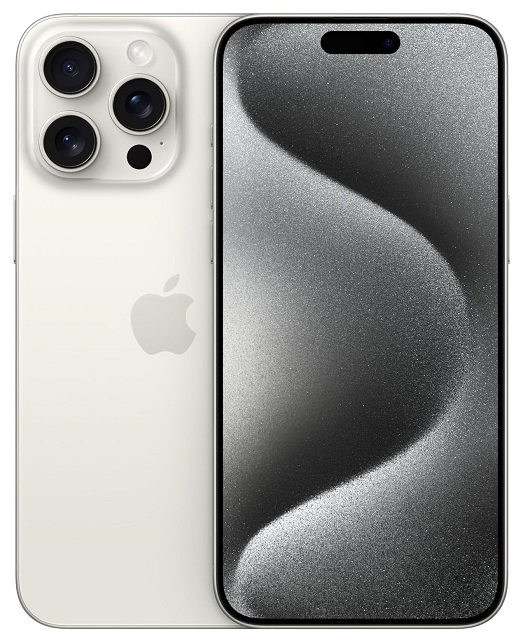
The Apple iPhone 15 Pro Max’s clever Dynamic Island, sharp cameras, powerful performance and super long battery life make it the best phone money can buy.
The titanium frame is luxurious, the frosted glass back looks and feels incredible, and small details — like the buttons and haptic feedback — are as exquisite as you’d expect.
As for colors, the iPhone 15 Pro Max comes in four shades: Black Titanium, White Titanium, Blue Titanium, and Natural Titanium.
The screen has a large 6.7 inches and a resolution of 2796 x 1290 — working out to the 460ppi high pixel density. With OLED screen tech, expect true blacks, an abundance of vibrancy and pop, and an incredibly high contrast ratio.
The screen quality is nothing short of sensational, including HDR, a silky smooth, 120Hz ProMotion refresh rate, 2000 nits of brightness, crisp clarity, True Tone colour temperature management and excellent responsiveness.
The A17 Pro processor is supremely fast, whatever you’re doing, which includes a 6-core CPU with a 6-core GPU. It is packed with 8 GB RAM and 256 GB, 512 GB, 1 TB internal storage options.
The iPhone 15 Pro Max has a 48-megapixel main camera, a 12MP wide-angle camera, and a 12MP telephoto camera. This setup provides a 2x and a 5x optical zoom, plus there’s all kinds of software trickery to enhance your images — including Apple’s Photonic Engine and Smart HDR 5.
There’s also a smaller cut-out for the front camera and a feature called Dynamic Island, which acts like a mini dashboard, providing access to the info you need no matter what app you’re in.
The iPhone 15 Pro Max is clearly the champ when it comes to battery life. Its 4,852 mAh battery lasted for an epic 14 hours on average.
The iPhone 15 Pro and iPhone 15 Pro Max are identical in every way apart from the size and weight of the handset, size of the screen, battery life and price.
2. Samsung Galaxy S23 Ultra
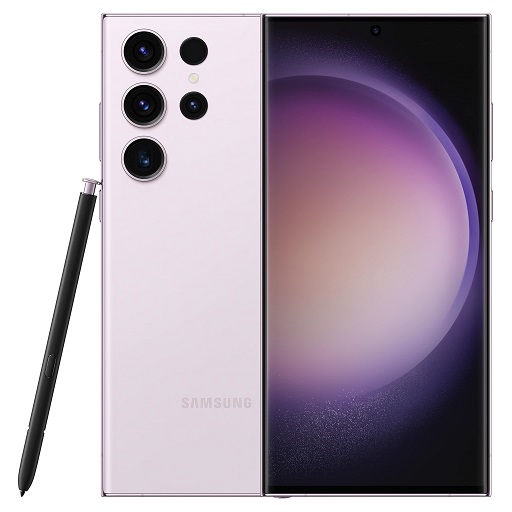
The Galaxy S23 Ultra is Samsung’s superior lead portable, and it’s the Android telephone to pick to convey state-of-the-art innovation in your pocket.
The 6.8-inch AMOLED panel offers a 3088 x 1440 resolution with an adaptive 120Hz refresh rate beauty. With a peak brightness of 1,750 nits, it does pretty great in bright light conditions.
The S23 Ultra packs AKG-tuned stereo speakers with Dolby Atmos that sound loud and clear. With the protection rating of IP68, Samsung’s S23 Ultra will have the best protection for mobile phones at the moment.
All three phones in the Galaxy S23 series are available in four colors: Phantom Black, Cream, Green, and Lavender. But if you order directly from Samsung you can choose one of four exclusive colors: Lime, Graphite, Red, and Sky Blue.
It’s one of few phones out there with a squared off body and screen, but it feels good to hold thanks to top build quality and nicely tapered edges and screen.
It is categorically the most powerful Ultra to date thanks to the arrival of a a custom version of Qualcomm’s Snapdragon 8 Gen 2 processor, aka the fastest CPU on a Galaxy device yet.
The Snapdragon 8 Gen 2 SoC paired with 8GB/12GB of RAM. It is offered with 256GB, 512GB and 1TB storage options. Storage is non-expandable but the default storage is adequate.
Thanks to the mighty black S Pen stylus, the S23 Ultra is a productivity champion. You can also use it for drawing and writing; it’s super sensitive and also has its own slot inside the phone.
The S23 Ultra’s cameras continue to impress, comes with both a 3x and 10x telephoto lens, an ultrawide, and of course, that shiny new 200-megapixel main camera.
The phone clicks amazing photos irrespective of the lighting conditions. In low light, the phone can manage decent shots even without night mode. It don’t just take videos in UHD quality, they also even allow video recording in 8K.
The Galaxy S23 Ultra has a battery capacity of 5,000mAh, unchanged from last generation. On adaptive mode, the Samsung S23 Ultra lasted a very good 12 hours and 22 minutes. That’s a big jump from the 9:50 from the S22 Ultra.
The Galaxy S23 Ultra support 45W fast charging (similar to their predecessors) and wireless charging. Within half an hour of charging, your battery is back up to 68%.
The Samsung Galaxy S23 Ultra is easily the biggest and most powerful of the Galaxy S23 series unveiled by Samsung recently.
3. Google Pixel 7 Pro
![]()
The Google Pixel 7 Pro is a fantastic Android phone that undercuts rivals like the Samsung Galaxy S22 Ultra when it comes to price, without ditching too many features.
The Google Pixel 7 Pro is clearly a sequel. It has the same size, shape, and overall design as its predecessor, the Google Pixel 6 Pro.
It includes a 6.7-inch, 1440p OLED screen with a 120 Hz refresh rate. The QHD panel is bright and crisp, screen stretches nearly edge to edge with minimal borders.
It’s bright enough for outdoor use, and it also has an extra-dim feature that makes the brightness easier on the eyes in dark rooms.
With its Tensor G2 chipset specialised for Google-specific AI functions, the Google Pixel 7 Pro shows all-around responsiveness. Also, the Tensor G2, which has enhanced graphics rendering than its predecessor, runs the Android 13 UI smoothly, ensuring a comprehensive and efficient user experience.
The Pixel 7 Pro offers a base model with 12GB of RAM and 128GB of storage, you can jump up to 256GB, or get 512GB by pay more money.
The Pixel 7 Pro’s 50-megapixel main camera takes stunning photos, with beautiful dynamic range and vivid colors. It’s grouped up with a dedicated 48-megapixel telephoto lens kicks in at 5x zoom that’s exclusive to the Pro, and a 12-megapixel ultrawide camera.
The Pixel’s shots are beautiful, offering some of the best-looking shots of any phone around, but it’s not top of the class when it comes to night mode images, so keep that in mind if dark city streets are your photo subject of choice.
An IP68 rating means the Pixel 7 series has the highest level of dust protection and you can immerse them in up to 1.5m (4.9ft) of water for up to 30 minutes.
The Pixel 7 Pro’s Adaptive battery is specified at 5,000mAh, It can last over 24 hours – and up to 72 hours when you turn on Extreme Battery Saver. Google’s own 30W USB-C Charger is reasonably priced and equipped with all you need to charge your Pixel 7 Pro.
Assuming you need a huge presentation, lead execution, the absolute best cameras available, and an appearance that stands apart from the group, the Google Pixel 7 Pro is the telephone to procure. It comes with three years of Android OS updates and five years of security updates.
4. OnePlus 11
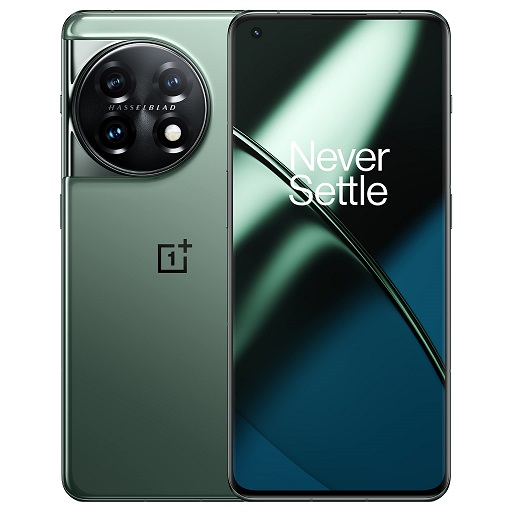
The OnePlus 11 comes with a new design, a Hasselblad stamped camera system, and a super-fast charging. It might be the best budget flagship out here.
The phone comes in glossy gray-green (Eternal Green) and sparkling black (Titan Black) color options.
OnePlus 11 5G is powered by a powerful Snapdragon 8 Gen 2 processor. It comes with 8GB, 12GB, 16GB of RAM. It offers blistering speeds for gaming and heavy multitasking. It charges quicker than Google’s phones too.
The OnePlus 11 comes in multiple storage options, from 128GB, 256GB to 512GB, but it doesn’t have a microSD card slot for storage expansion.
These powerhouse capabilities are now presented on a stunning Fluid AMOLED display – offering remarkable detail and vibrant colours.
The OnePlus 11 has a gorgeous 6.7-inch 2,048 × 1,080 screen with adaptive refresh rate tech that lets it go as high as 120Hz and as low as 1Hz to provide a buttery-smooth experience that doesn’t come at the sacrifice of battery life.
It also boasts support for HDR10+ and Dolby Vision, and the slight curvature to the edges helps it sit comfortably in the hand. The display spots Gorilla Glass for protection.
The OnePlus 11 has three cameras on the back consisting of a 50-megapixel main wide snapper, an 8-megapixel ultra-wide, and a 2X telephoto. It also has one 16MP front-facing camera that will sit in the top left corner of the screen in the form of a punch-hole.
The 50MP main rear snapper is a capable bit of kit able to capture detailed, vibrant images both during the day and at night. In fact, there have been massive gains in low-light photography compared to the OnePlus 10 Pro with the phone now able to compete with the best low-light cameras in 2023.
Camera tuning is also much better, with a consistent colour pallet across all three rear lenses.
The OnePlus 11 runs OxygenOS 13 based on Android 13, is buttery smooth, packed full of features, and looks pretty nice for the most part.
The OnePlus 11 has a 5,000mAh battery that’ll last all day, supports 100W Super VOOC fast charging that’ll get you from flat to full in less than half an hour. but it lacks support for wireless charging.
The OnePlus 11 features an IP64 water resistance rating, which means that the phone can withstand damage from the ingress of dust and water, but to a limited extent. That said, the rating is a downgrade from the the OnePlus 10 Pro’s IP68 rating.
It’s not the perfect phone, lacking popular features like wireless charging and an official IP rating, but it offers one of the best all-round experiences at a price point cheaper than many rivals.
5. Oppo Find X5 Pro
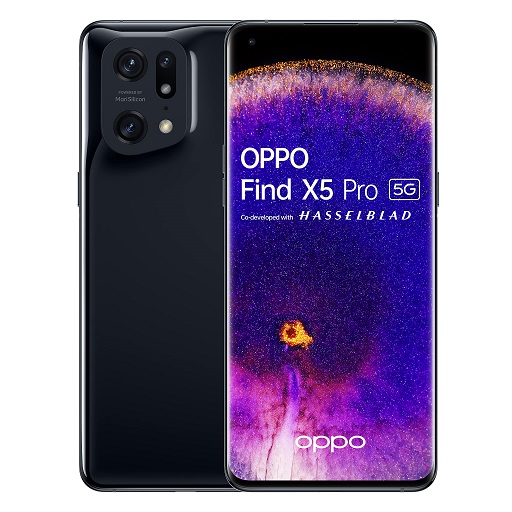
The Find X5 Pro showcases OPPO’s best-in-class features, including its 80W SuperVOOC fast wired and 50W wireless charging technology, high-end performance, and runs ColorOS 13 based on Android 13.
Clad in beautifully premium ceramic with a curved camera housing, it’s one of the most unique-looking handsets around, with fiendishly-fast specs to match.
Up front is a 6.7-inch curved display running at 3216 x 1440 resolution (525ppi) in a 20:9 aspect ratio, and the LTPO AMOLED screen supports variable refresh rates right up to 120Hz.
As for picture quality, the Oppo Find X5 Pro is crisp and delivers a solid HDR performance, making for an enjoyable viewing experience overall.
The screen is made with Gorilla Glass Victus, which should ensure it survives the odd drop, and the phone is IP dust and water-resistant, meaning it’ll last in up to 1.5 meters of water for half an hour.
Packing a Qualcomm Snapdragon 8 Gen 1 processor, Combined with 12GB of RAM and 256GB of storage, multitasking and gaming are as smooth as butter on the Find X5 Pro.
It has two swanky 50MP main and ultra-wide-angle cameras on the back and a 32MP front camera. The display has a hole punch camera nestled in the top left corner that can be used for facial recognition.
It’s equipped with a custom-built imaging chip, Oppo’s MariSilicon X, which runs Oppo’s AI imaging algorithms. This chip also promises to deliver improved low-light and video photography.
Oppo has teamed up with Hasselblad to improve its camera’s color calibration and image optimisation. the cameras are based on Hasselblad’s ‘Natural Colour Calibration’ to use more natural and accurate colours.
In addition to this, the mobile features an 80-watt SuperVOOC charger and a bigger battery than last year.
The Find X5 Pro will easily last power users through a full day of screen-on-time thanks to its 5,000mAh dual-cell battery.
The 80W fast charge gets 0-100% in about 36 minutes. There’s also wireless charging, which isn’t as fast, but it’s still a remarkably high 50W.
It might not have the big-name pull that some of the other devices do on this list, but Oppo’s Find X5 Pro is a serious player; one that should be high up on the wishlist of those in the market for a top flagship.
There’s also a more affordable OPPO Find X5 model in the series, boasting a similar design but with a few small compromises to the hardware package.
6. Sony Xperia 1 IV
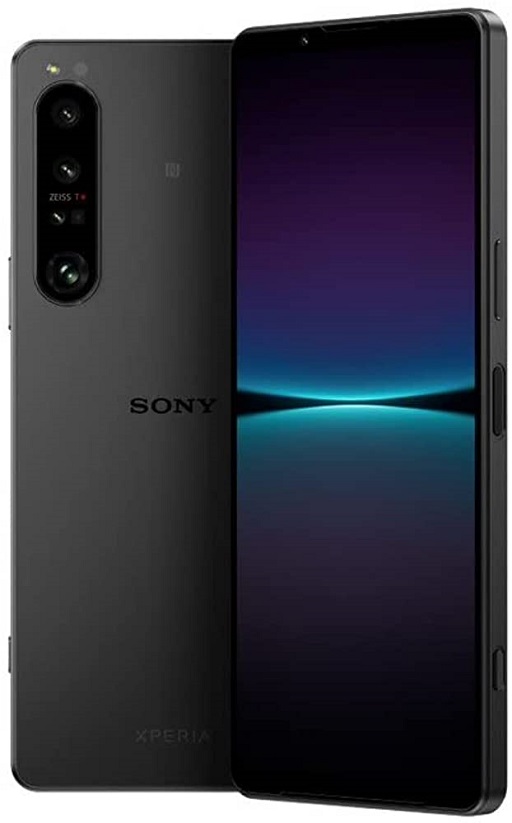
The flagship Sony Xperia 1 IV is built for content consumers and creators, whether you’re taking snaps, shooting video, or streaming mobile games to viewers across the globe. Just be prepared to pay well over the odds for them.
The metal chassis adds an extra premium touch, while the square frame, now with minimized edges for better grip. comes with the sturdy Gorilla Glass Victus on the front and back, and a metal frame.
It has both IP65 and IP68 certification, so it’s well protected against dust and brief submersions in water. You can pick up the device in violet, white or black.
There’s a 3.5mm headphone jack for wired headphones and a microSD card slot to augment internal storage with up to 1TB more.
The display has a 6.5-inch diagonal with 21:9 aspect ratio, which means the screen is extra tall, it’s still a narrow phone for regular use.
It’s an HDR-compliant OLED panel with a 4K (3840 x 1644 pixels) resolution, a 120 Hz refresh rate, and 240 Hz touch-scan rate. you have everything you need to enjoy your content.
Powered by Qualcomm’s Snapdragon 8 Gen 1 chipset and 12GB RAM, performance isn’t an issue for your everyday apps and multitasking scenarios. For storage, you get either 256GB if you’re in the europe., or 512GB if you’re in the U.S.
The Xperia 1 IV packs a larger 12MP 1/2.9-inch front-facing camera this year which certainly boosts selfie image quality. It has a triple camera on the back — an ultra-wide (16 mm equivalent, or 0.67x), wide (24 mm equivalent), and telephoto camera that has actual variable zoom.
The camera is offering levels of detail, vibrant colour and crisps detail, even at up to 2x zoom.
The levels of accuracy, alongside tons of customisation options, make this a camera made for photography enthusiasts who love to tinker and perfect.
With a larger 5,000mAh battery onboard (up from 4,500mAh last generation), expect a full day of use and often more from the Xperia 1 IV.
Fast-charging at 30W using universal USB Power Delivery isn’t blazing fast, but it’s decent enough for a modern flagship. You can also use a wireless Qi charger to power up the Sony Xperia 1 IV at up to 15W.
7. ASUS Zenfone 9
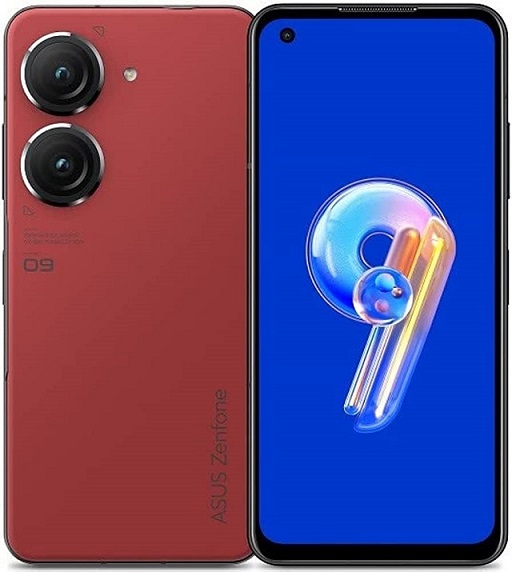
Asus has been perfecting its Zenfone line in the past couple of years, and the Zenfone 9 is the pinnacle of all that effort.
The Asus Zenfone 9 is particularly attractive with its compact design. A smooth aluminum frame holds together the phone’s plastic back and Gorilla Glass Victus front. and the phone as a whole has an IP68 rating for dust and water-resistance.
The 5.9-inch OLED on the Zenfone 9 offers a top refresh rate of 120Hz, which offers a smooth scrolling experience. The screen’s peak brightness of 1,100 nits means it can be comfortably used even in very bright conditions.
The flagship-grade Snapdragon 8 Plus Gen 1 processor paired with 8GB/16GB of RAM makes the phone feel plenty responsive for everyday and even heavy tasks. These RAM options are paired with 128GB or 256GB of internal storage.
Camera-wise, you get a 50Mp main sensor which is very good, The gimbal camera system delivers six-axis stabilization, which should keep the 1/56-inch sensor steady. Matched with EIS, it captures 16MP photos by default, and Asus promises a lossless two-times digital zoom.
The sensor produces vibrant shots with a solid white balance and robust autofocus. this phone punches above its weight with suerb low-light photos and stable video.
The battery of the Asus smartphone offers a capacity of 4,300 mAh and the battery life is also good. In lighter use this phone will make it through the day and into the next pretty easily, so you don’t necessarily have to charge it every night.
It can be recharged at a rated performance of 30 watts with Quick Charge technology in about 85 minutes. Wireless charging, on the other hand, is missing.
If you want a genuinely small Android phone with flagship level specs, then this is the phone for you.
8. Realme GT 2 Pro
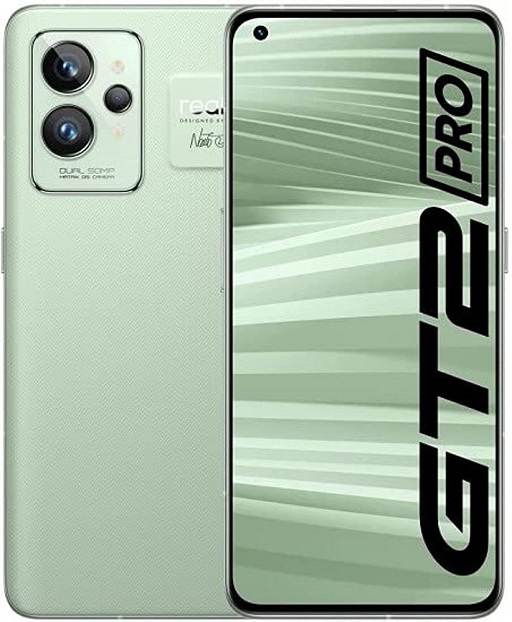
The Realme GT 2 Pro is the company’s first foray into true flagship performance, and it’s pretty great.
Without a hefty plate of glass at the rear, the Realme GT 2 Pro has a slim profile overall and is also quite light weight, which makes it comfortable for one-handed use.
The Realme GT 2 Pro’s large 6.7-inch AMOLED display with a QHD+ 3216 x 1440 pixels (~525 ppi density) resolution offers exceptional quality, making it a great phone to watch content on.
It features an adaptive refresh rate from 1 to 120 Hz, touch sampling rate up to 1000 Hz, and 10-bit color. With a peak brightness of 1400 nits, it shines boldly, making it easy to view even in bright outdoor environments.
With Snapdragon 8 Gen 1 power, and matched with a huge 8GB/12GB RAM and 256GB/512GB storage, everything from multi-tasking through to storing loads of apps, offline content and games shouldn’t be a problem.
The phone runs Realme UI 3 based on Android 12. This relatively light interface is similar to Oppo’s ColorOS 12, and delivers a responsive, clean experience with fantastic app support.
Packed with shooting modes, the Realme GT 2 Pro’s 50MP main camera can capture downsampled 12MP images or 50MP full-res images.
The super ultra-wide camera can shoot with a standard ultra-wide field of view, or a full 150º field of view, and the microscope camera can capture with either 20 times optical magnification or 40 times hybrid magnification.
Photos taken on all of the cameras pack loads of detail, and Nighttime photography is also impressive with the GT 2 Pro firing up a long exposure automatically and benefiting from a dedicated Night Mode.
With a massive 5000mAh battery inside, the GT 2 Pro easily lasts a day, and with careful use can creep into a second day. As for fast charging, Realme’s proposal is pretty standard. 65 watts is able to deliver a complete empty-to-full refill in just 33 minutes.
The Realme GT 2 Pro is a fantastic entrant in the premium segment. The device has a lot going for it and will not disappoint you in the slightest, provided you can look past the handset’s lack of IP rating or support for wireless charging.
9. Samsung Galaxy Z Fold 4
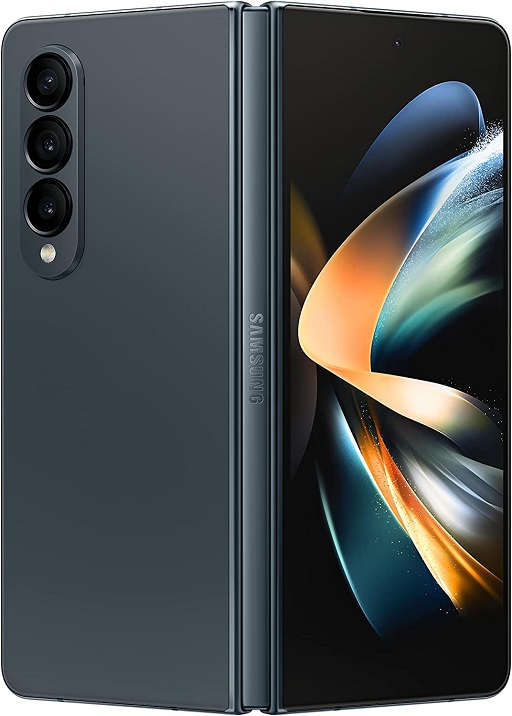
The Galaxy Z Fold 4 is a stellar foldable phone that offers great multitasking capabilities, fantastic cameras and a large display. The speedy processor and high refresh rate screen weren’t just good for games. Animations look incredibly smooth.
The Galaxy Z Fold 4 is powered by the new Snapdragon 8 Plus Gen 1 chip along with 12GB of RAM. The default storage is 256GB, but you can upgrade to 512GB or now 1TB. The specs is strong and efficient, offers plenty of power, so the performance is fast and buttery-smooth.
With one screen on the outside, you can use the Z Fold 4 just as you would a normal phone, but then there’s a double-sized screen on the inside. Simply unfold it and you’ll seamlessly swap from the long and thin 6.2 inch outer screen to the squarer 7.6 inch inner screen. While folded, the phone is a whopping 1.58cm thick so you better have thick pockets.
The display covers with Samsung’s latest generation, proprietary Ultra Thin Glass tech. The resolution is once again a little sharper than its predecessor and is combined with a 120Hz dynamic refresh rate, up to 1,200 nits of peak brightness, and a slightly improved 90.9% screen-to-body ratio (up from 88.8%) due to its marginally boxier aspect ratio.
It starts with a 50MP main camera with a 23% brighter sensor, which should result in better looking images indoors. You also get a 12MP ultra-wide camera and a 10MP telephoto lens with 3x optical zoom and 30x Space Zoom. The front of the phone houses a 10MP selfie camera, and the right side of the 7.6-inch display has a lowly 4MP sensor.
The Z Fold 4 captures videos at up to 8K resolution at 24fps, and 4K at up to 60fps, and if you’re shooting in Pro Mode, manual ISO can be set as high as 3200, and the shutter speed up to 30 seconds.
One of the biggest improvements with the Galaxy Z Fold 4 is the software, and that’s thanks to the new Android 12L operating system on board. This special version of Android is designed for large-screen devices, including foldable phones.
Flex mode has also improved with the Galaxy Z Fold 4, which puts the content of apps up top and controls down bottom when you fold the screen in half.
The device comes equipped with numerous polished power user features, including split-screen and windowed multitasking, a fixed taskbar, Samsung DeX, and stylus support, giving users the ability to do everything they desire with Android.
Durability is also worth a look, as previous Fold devices have struggled in this area. This feels like the strongest Z Fold yet. The IPX8 water resistance remains, there’s a stronger Gorilla Glas Victus on the front and the hinge feels sturdy.
A 4,400mAh battery provides the juice to keep the productivity powerhouse going, with 25W wired charging and 10-15W wireless charging to top it back up again. The battery is okay and generally gets through the day with a little to spare, given light to moderate use.
If you’re willing to spend the money, then with the Z Fold 4 you really are getting a device that’s different.
10. Motorola Edge 30 Ultra
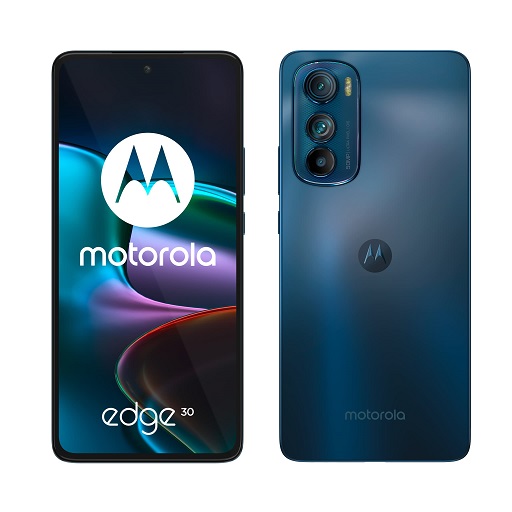
The Edge 30 Ultra is a surprisingly excellent flagship from Motorola, has an excellent camera system, and beautiful looks, and is a beast when it comes to performance and charging speeds, and only few flaws.
The Motorola Edge 30 Ultra sports a lovely premium design: dual-curved display, sleek glass-and-metal construction, and slightly sparkly ‘Interstellar Black’ finish.
The beauty of the design carries over to the display, with the 6.67in OLED panel incorporating a 2,400 x 1,080 (FHD+) resolution with HDR10+ support and a lightning-quick 144Hz refresh rate.
The Motorola Edge 30 Ultra’s display punches well above its asking price really, delivering ultra colourful and ultra bright images that are silky smooth thanks to that refresh rate.
The Motorola Edge 30 Ultra runs on a Speedy, efficient Qualcomm’s Snapdragon 8 Plus Gen 1 processor, The Plus revision runs faster and cooler, and thus more efficiently.
The default version of the phone ships with Ample 12GB RAM and 256GB of storage – though this will vary by market.
Wireless connectivity doesn’t disappoint either, with Wi-Fi 6E and Bluetooth 5.2 supported, along with NFC for contactless payments.
The Motorola Edge 30 Ultra sports three rear cameras, highlighted by the main 200MP sensor. It also features a high-res 60MP front-facing camera.
It using Samsung’s ISOCELL HP1 sensor, which includes optical image stabilisation, paired with an aperture f/1.9 lens. Shots are crisp, bright, and rich in detail, all helped by a comfortable HDR effect.
Portrait shots are pretty cool on the Edge 30 Ultra. You can switch between all three of the cameras. The ultra-wide and main cameras do a very good job of capturing your object, and the software is blurring out the background just fine. However, the telephoto camera again lacks detail.
While the phone’s battery is a bit smaller than many competing options at 4610mAh, it still comfortably saw us through a full day.
Once depleted, fast charging via the provided 125W charger can bring the battery up to 50% in just nine minutes, and on to full in 20 minutes.
The only bummer is that the Motorola Edge 30 Ultra has IP52 dust and water resistance. that means you have to be very careful when you take this phone near a swimming pool or in rainy conditions outdoors.
The Motorola Edge 30 Ultra is an excellent Android flagship that excels in almost every spec while costing less than the competition.
11. iPhone 13 mini
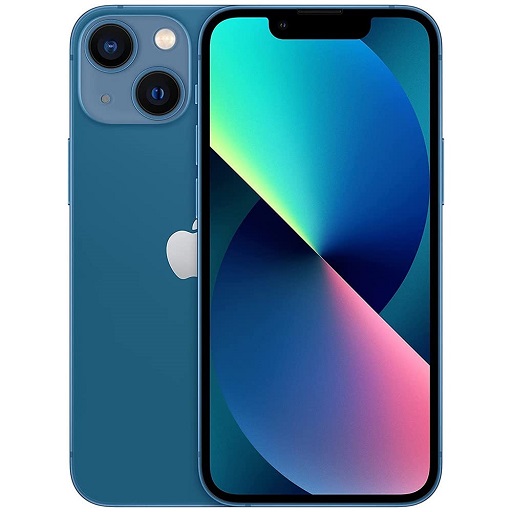
The iPhone 13 mini is the best iPhone for those who want a smaller device on Apple’s iOS platform. In fact, it’s arguably still the best small phone on the market.
There’s no alternative on that front – the iPhone SE is terribly outdated, and aims to capitalize on nostagia, and the iPhone 12 mini has terrible battery life.
The iPhone 13 mini has an OLED screen with a 5.4-inch diagonal and a 1080 x 2340 pixel resolution. This results in a pixel density of 477 PPI. It’s quite sharp and pleasing to the eye — especially at that size, you won’t be noticing individual pixels.
And the overall display brightness has been amped up, peaking at 800 nits for comfortable viewing when you’re outdoors on a bright day and 1200 nits for HDR content.
The iPhone 13 mini is powered by Apple’s A15 Bionic chipset. That’s the same processor as other 13 series iPhones, and it’s seriously powerful, easily capable of loading and running multiple apps.
iPhone 13 mini comes with 4GB of RAM, so it isn’t as powerful as its Pro siblings that come with 6GB, but it was capable of running all the top-end apps. Your storage options here are 128GB, 256GB or 512GB.
The main 12MP camera has a larger sensor that lets in more light, improving photos in poorer lighting conditions. There’s also sensor-shift optical image stabilization, This should help things stay even more stable than traditional OIS.
As for the 12MP ultrawide camera, it also has a larger sensor. There’s autofocus on board now, too, which can make a big difference in ensuring ultrawide shots come out sharp.
The iPhone 13 mini has a low capacity battery at 2,406 mAh. During an average day of usage, the iPhone 13 Mini is capable of lasting 14-16 hours on a full charge with around 5-6 hours of screen time.
It has a Lightning port with fast wired charging at 20W (up to 50 percent in 30 minutes); Support for MagSafe wireless charging up to at 15W; Qi wireless charging at up to 7.5W.
It’s powerful, the camera is top-tier, 5G support, fast performance, solid battery life, decent storage and long software support. It fits in pockets easily and works great for messaging and calls.
12. Asus ROG Phone 6 Pro
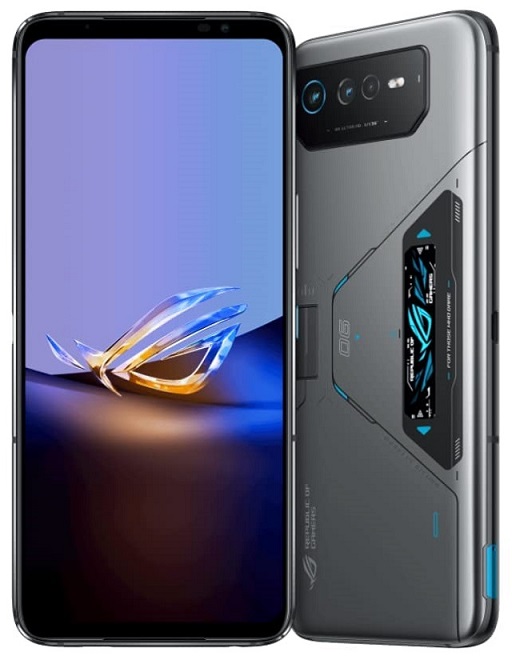
The ROG Phone 6 Pro is a fantastic gaming phone, sporting a large display, a big battery, and all the power you need.
The ROG Phone 6 Pro packs a monstrous 6.78-inch, 2448×1080 OLED display, the maximum refresh rate is 165Hz. the responsiveness and fluidity it offers is stunning.
The phone can automatically adjust the refresh rate as the situation demands, helping it save on battery when those 165Hz speeds aren’t needed.
Other notable aspects of the screen are its 800 nits of brightness with 1,000,000:1 contrast ratio and 720Hz touch sampling rate.
Even in everyday usage, it’s hard not to be impressed by the 6 Pro’s display. It delivers excellent detail and vibrant colours, making for an immersive viewing experience.
Powering the ROG 6 Pro is a Snapdragon 8 Gen 1, paired with 18GB RAM and 512 GB of storage. These are top-of-the-line specs necessary to run the phone’s HD screen at high framerates.
The loudspeakers on either side of the display are simply the best on any phone currently on the market. Each is individually powered and, combined, they offer loud, well-balanced sound with lots of bass and good stereo separation.
The ROG Phone 6 Pro’s rear camera setup includes a 50MP primary lens, a 13MP wide-angle lens, and a 5MP macro lens. At the front, you’ll find a 16MP Sony IMX663 lens. you do get 8K video recordings at 24FPS.
Photos are acceptable, especially in good lighting, but those who like to capture the perfect shot, especially in suboptimal settings, are definitely in the wrong place.
The ROG Phone 6 Pro has a total of 6,000 mAh worth of battery capacity, It hands in anywhere from three to six hours of gaming time, depending on how demanding the game is in the graphics department.
The ROG Phone 6 Pro comes with a 65 W HyperCharge plug in the box, which is capable of juicing up the phone from 0% to 100% in about 40 – 45 minutes. Due to its thermal management system, the phone lacks wireless charging.
If what you want is a super-powerful phone with incredible specifications, and you don’t mind the camera not being the best of the best, then the Asus ROG Phone 6 Pro is definitely worth a shot.
9 Things to consider before buying a smartphone
There are some key features that are very important for the user experience when buying a smartphone.
When choosing a phone you should consider these things: build quality and design, ease of use, features, performance, and value.
Display
You’re going to spend many hours gazing at the screen, so make sure it’s a good size for you and that it has a high resolution.
This diagonal screen size measurement of phone screens is given in inches.
Depending on the length of your thumb and index finger, small size phones will be more comfortable to hold and use.
The bigger the display of a smartphone, the better viewing experience we would get. Large screen phones are typically said to be 6.5-inches or above.
2 of the major competitors of smartphone display are AMOLED and LCD. Amoled display offers both the benefits- high-end vibrant display and less battery consumption. The only criteria where LCD displays win over Amoled is the brightness level.
The quality of a display is mainly measured according to the colors and sharpness (PPI) it offers.
Another buzzy new metric is the refresh rate of the display. Modern flagships sport at least a 120Hz display refresh rate, which makes things very smooth, especially when you scroll through text and websites.
Performance
The performance of a smartphone is a composite factor that depends on its processor and RAM.
Most smartphones are powered by octa-core processors these days. As a general rule, the clock speed of a processor (measured in GHz) shows how fast the phone is and will give you a rough indication of how fluid the operating system feels, as well as how the phone copes with running apps and games.
A powerful processor and ample RAM will ensure a smooth and seamless user experience, but you shouldn’t forget about the actual software on top of that and the optimization that’s going on.
A clean and well-optimized smartphone OS could offset more modest hardware inside.
Operating System: iOS vs Android
There are two smartphone operating systems to decide from: iOS and Android.
With iPhones, the operating system and hardware are tied at the hip. You’ll only find iOS on Apple’s own smartphones.
Typically, iOS gets apps first and is a wonderfully slick OS. It isn’t as customisable as Android, but there’s no doubt that it’s incredibly easy to use.
Apple’s closed ecosystem makes for tighter integration, so iPhones don’t need super powerful specs to match the high-end Android phones. It’s all in the optimization between hardware and software.
Sure, there are some Apple services you can’t get on an Android phone, like iMessage, procreate and facetime, but on the whole, most apps are the same.
Generally speaking, iOS devices are faster and smoother than most Android phones at comparable price ranges. But this is not to say all iOS devices can outperform all Android devices. Some Android phones are made with beastly internals and stunning performance.
Android has a much wider reach than its Apple counterpart and is found on the majority of smartphones on the market. There are many different versions of Google’s operating system available, though.
Generally speaking, you’ll want a phone running Android 12 or higher, as older versions will now be outdated. Manufacturers often customise their own versions of Android, which means that the experience can differ between handsets.
Storage
The internal storage, measured in gigabytes (GB), is still important for storing apps, photos and videos, even if most content is now streamed.
Most smartphones come with a storage capacity of 64 GB to 128 GB ranges up to 256 GB, 512 GB to 1TB . the base storage of future Phones will be 128GB at least for the next few years.
More storage does increase the cost of the device, but also make sure there’s enough space for all your favourite applications. You can also keep an eye on the expandable storage ones.
Camera
If the display is how we consume the information on our smartphones, the camera is essentially a device for capturing memories.
The number of megapixels is not the only thing to think about. The aperture, image stabilization, and processing technology all play a role in the quality of the camera.
If you are likely to take many pictures, then you may go for one with a 12 or 16 MP camera with an aperture of f/2.0 or lower. It also gives good results even in low light.
Furthermore, if your camera use isn’t that heavy, a smartphone with an 8-12 MP camera and aperture of f/2.2 is also going to work fine for you.
Ultra-wide angle is easy to use and creates great effects, telephoto lenses get you a lot closer – but the quality of telephoto cameras varies significantly.
Periscope lenses are becoming more common, meaning 5x and 10x zoom is now a great option on some models, as well.
Battery life
Even the best smartphone in the world is worthless if the battery runs out. A long-lasting battery is essential for those who use their phone frequently.
The battery life of a phone varies depending on the model and usage patterns, but the bigger capacity the battery, the better.
Design and Build Quality
The design and build quality of a smartphone is always an important factor that can determine its durability and aesthetic appeal.
A well-built phone with a sleek design will not only look good but also last longer.
Different protection ratings also fall into this category, such as the IP dust and water resistance rating, and the tempered glass on the front and back, mainly manufactured by Gorilla Glass.
5G Connection Support
T-Mobile has the largest network, with its 5G service reaching 323 million people, Verizon and AT&T have been expanding their coverage as well.
The 5G connection deliver much faster downloads, lower latency and a lot more. so it makes more sense than ever to make sure your phone can connect to a 5G network.
Of course, these days, you don’t have to look too hard to find a phone with 5G connectivity. It’s built into practically ever phone that comes out, from major flagships to budget models. That means for even just a couple hundred dollars, you can get a device that takes advantage of 5G’s high speed and low latency.
Price and Budget
Smartphones come at various price points. From under $300 to over $1000, there’s something available for everyone.
Though flagship models now often cost $1,000 or more, it’s still possible to get a good price on your next cell phone.
No matter your budget, you can almost always find a good deal when buying a new phone. Smartphones have evolved so fast in recent times that you really don’t need to spend a lot of money to get an overall good experience.
If you can hone in on the one or two features that are most important to you and you’re willing to compromise elsewhere, you can get a phone that suits your needs for half the price of a flagship.
And while we usually recommend buying unlocked phones to maximize flexibility, you might find better deals — and much lower up-front costs — by buying through a carrier and signing up for a wireless plan.
Sure, you can spend a few hundred dollars on a brand-new midrange phone, but you also might be able to score one of last year’s flagship models, which likely offers better specs and performance, for the same midrange price.
When new phones are released, older models are usually discounted, and carriers frequently offer the same, or similar, promotions on these phones as they do on the new versions.
Conclusion
The smartphones are a significant investment, so getting the right model is more important than ever.
I prepared this list after a thorough product analysis, extensive research, and in-depth comparison.
I’m sure that this list of the best phones will help you gain better insights and narrow your list of options per your requirements.
Note down your requirements, specifications, and preferences and choose the product meticulously. Now you can check which one would you like to go for.
Please cross-check the specifications if you decide to purchase one of the phones listed above.
Hurry, don’t wait! Go, grab the best sales on phones today.

